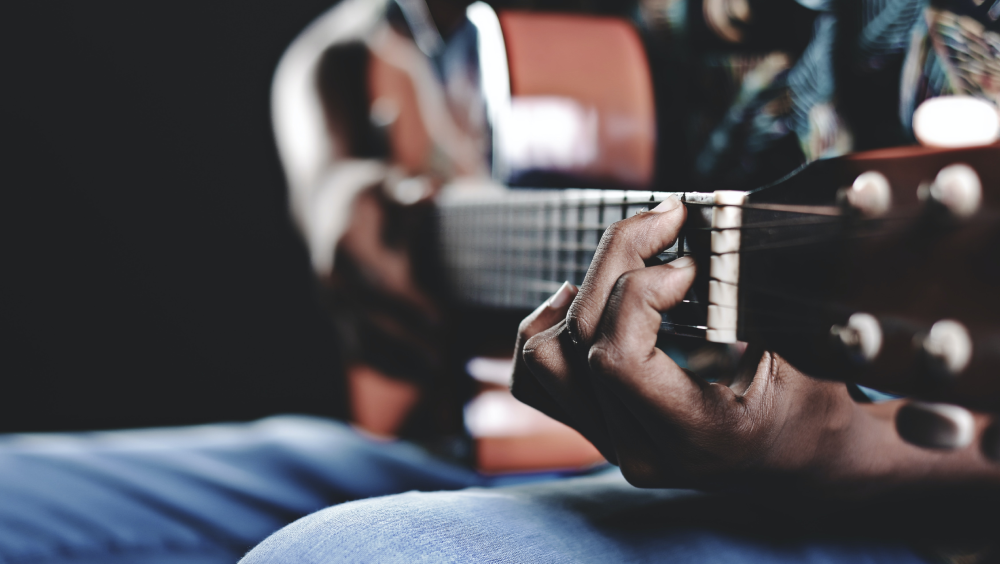Artist manager, PR and independent label aficionado Katie Riding talks us through her top tips for self-releasing music in both physical and digital formats.
Katie is co-founder of Bang On PR and co-creator of Independent Label Market with Joe Daniel, head of Angular Records. She also manages Planningtorock and The Invisible. Previously, Katie has worked with Foals, Bat for Lashes, Human League, The Knife, These New Puritans and many more UK and international acts.
She was recently involved in helping Planningtorock to launch her own record label Human Level, which has produced cult releases on both physical and digital formats. The first EP, released late last summer, featured Planningtorock and French electronic artist rRoxymore.
Here, Katie talks us through the process of setting up your own record label, offering useful pointers for those interested in taking the DIY route.
Katie is co-founder of Bang On PR and co-creator of Independent Label Market with Joe Daniel, head of Angular Records. She also manages Planningtorock and The Invisible. Previously, Katie has worked with Foals, Bat for Lashes, Human League, The Knife, These New Puritans and many more UK and international acts.
She was recently involved in helping Planningtorock to launch her own record label Human Level, which has produced cult releases on both physical and digital formats. The first EP, released late last summer, featured Planningtorock and French electronic artist rRoxymore.
Here, Katie talks us through the process of setting up your own record label, offering useful pointers for those interested in taking the DIY route.
First things first
Decide on a release format then get your music mixed. You can either do this at home with the right computer programme or at a professional studio (more on that later).
Then register with PPL as both a rightsholder (you will own the recording copyright to your own music you release) and as a performer (as you will also have played on the recording). When joining as a rightsholder, PPL will issue you with ISRC product codes that you need to assign to each track you release. PPL give you a long ISRC number that’s exclusive to your record label and every time you put out a release you add a unique identifier to the end of the code to mark each particular song.
[Please see M’s note at the bottom for guidance from MCPS on releasing your own music]
Once you have your ISRC codes you are ready to register with a digital distributor. If you haven’t got your own ISRC codes already, some digital distributors may be able to assign you some. It’s worth checking with them.
Decide on a release format then get your music mixed. You can either do this at home with the right computer programme or at a professional studio (more on that later).
Then register with PPL as both a rightsholder (you will own the recording copyright to your own music you release) and as a performer (as you will also have played on the recording). When joining as a rightsholder, PPL will issue you with ISRC product codes that you need to assign to each track you release. PPL give you a long ISRC number that’s exclusive to your record label and every time you put out a release you add a unique identifier to the end of the code to mark each particular song.
[Please see M’s note at the bottom for guidance from MCPS on releasing your own music]
Once you have your ISRC codes you are ready to register with a digital distributor. If you haven’t got your own ISRC codes already, some digital distributors may be able to assign you some. It’s worth checking with them.
Sort out proper digital distribution for your release
Planningtorock’s last record came out on the DFA label, but she wanted to start her own label specifically for female artists and producers. So she did a deal with AWAL, a digital distribution company that supplies all the major online outlets including iTunes, 7Digital, Amazon, Beatport, Bleep, Spotify and Play.com.
Recently it’s become really easy for anyone who wants to set up a digital-only record label. AWAL is one of many similar services, which are great for getting your music out there quickly and cheaply. All you need to do is visit their website and set up a contract that lasts for 30 days at a time.
It’s as straightforward as setting up a Facebook profile – you upload your image, say a bit about the label then upload your product. It takes about two weeks to go through the motions with AWAL and get all your pre-order links.
AWAL takes a commission of 15 percent, which is less than a conventional distributor that might charge around 20 percent on your digital product.
The benefit of using a digital distributor rather than a DIY digital platform like Bandcamp is that they will get you on iTunes. You are then in with a chance of iTunes picking you up for its Track of the Week slot. Also, a lot of people use iTunes for music discovery. If they hear about an artist they are interested in, they’ll use iTunes to track down their music.
Some websites will have a deal with iTunes too, so when they review your release they will have a button at the bottom of the article which takes readers straight through to the iTunes shop.
Planningtorock’s last record came out on the DFA label, but she wanted to start her own label specifically for female artists and producers. So she did a deal with AWAL, a digital distribution company that supplies all the major online outlets including iTunes, 7Digital, Amazon, Beatport, Bleep, Spotify and Play.com.
Recently it’s become really easy for anyone who wants to set up a digital-only record label. AWAL is one of many similar services, which are great for getting your music out there quickly and cheaply. All you need to do is visit their website and set up a contract that lasts for 30 days at a time.
It’s as straightforward as setting up a Facebook profile – you upload your image, say a bit about the label then upload your product. It takes about two weeks to go through the motions with AWAL and get all your pre-order links.
AWAL takes a commission of 15 percent, which is less than a conventional distributor that might charge around 20 percent on your digital product.
The benefit of using a digital distributor rather than a DIY digital platform like Bandcamp is that they will get you on iTunes. You are then in with a chance of iTunes picking you up for its Track of the Week slot. Also, a lot of people use iTunes for music discovery. If they hear about an artist they are interested in, they’ll use iTunes to track down their music.
Some websites will have a deal with iTunes too, so when they review your release they will have a button at the bottom of the article which takes readers straight through to the iTunes shop.
Should you bother with physical releases?
People still make physical product and punters still like it. We find that every time we hold the Independent Label Market.
Planningtorock wanted to release her first Human Level EP on vinyl as well as digital download. So she got in touch with a pressing plant in Leipzig in Germany to enquire about getting 300 records made up. She opted for blank sleeves and stickers to keep the costs down, and personalised them later. But it’s not the manufacturing that costs the money; it’s the mastering and mixing. It can cost three times as much as vinyl production.
Mastering alone can be really expensive but it’s important to get the levels right and ready for your chosen release type, be that CD, vinyl or download.
Always get your music mastered when you are sure you’re happy with the final mixes of all your tracks.
It’s worth spending a bit of time hunting round for a cheap service if you’re on a tight budget. The Carvery in Hackney, London, does mastering for around £25 per track, which is brilliant. Use that as a guide. Usually mastering can be £200-300 a track.
If you don’t mix your own music, it can be even more expensive than mastering – anything from £200 to £6,000 a track! But don’t despair. There are always shortcuts to be found on both the mixing and mastering side. Find a young engineer who is working as an assistant to the main mixing engineer at a studio. Ask them if they’ve got any down time. A keen assistant, who’s willing to make a name for themselves, will happily mix your music in their free time. It’s a really competitive field to get into, so people are happy to work for very little to get their foot in the door. So, if you’re hiring studio time you should keep an eye out for willing assistants to help you out.
Overall, it’s not that expensive to make some vinyl if you keep all the costs down. You can probably get the whole lot done for £1,000 for 300 records.
Look for cheaper overseas vinyl manufacturers and get ask for white labels and sleeves which are less expensive. Personalise them yourselves and you can charge £10 a piece. Each unit would cost you £3.33 and so you’d be making a fair bit back. You’d only need to sell 100 to cover your costs.
People still make physical product and punters still like it. We find that every time we hold the Independent Label Market.
Planningtorock wanted to release her first Human Level EP on vinyl as well as digital download. So she got in touch with a pressing plant in Leipzig in Germany to enquire about getting 300 records made up. She opted for blank sleeves and stickers to keep the costs down, and personalised them later. But it’s not the manufacturing that costs the money; it’s the mastering and mixing. It can cost three times as much as vinyl production.
Mastering alone can be really expensive but it’s important to get the levels right and ready for your chosen release type, be that CD, vinyl or download.
Always get your music mastered when you are sure you’re happy with the final mixes of all your tracks.
It’s worth spending a bit of time hunting round for a cheap service if you’re on a tight budget. The Carvery in Hackney, London, does mastering for around £25 per track, which is brilliant. Use that as a guide. Usually mastering can be £200-300 a track.
If you don’t mix your own music, it can be even more expensive than mastering – anything from £200 to £6,000 a track! But don’t despair. There are always shortcuts to be found on both the mixing and mastering side. Find a young engineer who is working as an assistant to the main mixing engineer at a studio. Ask them if they’ve got any down time. A keen assistant, who’s willing to make a name for themselves, will happily mix your music in their free time. It’s a really competitive field to get into, so people are happy to work for very little to get their foot in the door. So, if you’re hiring studio time you should keep an eye out for willing assistants to help you out.
Overall, it’s not that expensive to make some vinyl if you keep all the costs down. You can probably get the whole lot done for £1,000 for 300 records.
Look for cheaper overseas vinyl manufacturers and get ask for white labels and sleeves which are less expensive. Personalise them yourselves and you can charge £10 a piece. Each unit would cost you £3.33 and so you’d be making a fair bit back. You’d only need to sell 100 to cover your costs.
Distributing your own physical product
Most independent record shops still do sale or return on physical products. If you approach someone behind the counter you can usually strike up a deal where they buy your CDs or vinyl at a certain price and sell them on at a higher price to make a cut. For example, Factory Floor screen-printed the sleeves of their recent EP and took them to Rough Trade, who snapped them up. If a shop really loves the music, they’re happy to deal with the band direct.
In the case of Planningtorock, we took the vinyl EPs to London record shops Phonica and Rough Trade and Hard Wax in Berlin. We also sent a load to friends and it just built from there.
For her second release, Planningtorock created some black ink drawings on white paper and slipped those into the plain 12-inch record sleeves. She only made 40 of them, which were hand-numbered.. Yannis from Foals made a YouTube video of himself opening the super deluxe version of their latest album Holy Fire. Punters could really see all the extras they were getting, it looked great.
CDs are harder to customise so it’s harder to sell them for much money. I think doing something unusual is really important. Maybe for the first run you can test the waters, but once you’re up and running as a self-releasing artist you should think creatively about your products. Think about the collectability of your releases and consider what your fans would like to buy.
Remember: there are physical alternatives to vinyl and CDs that work well on merch stands at gigs
It’s nice to have a physical product but you have to pay for it. For new artists just starting off, I’d suggest just doing digital releases at first. And then if you build up a profile and arrange a tour you can do something really simple like sell a piece of artwork or photo with a QR code on the bottom linking to the download. You can sell those for at least £3 each and it helps to cover your costs.
M note:
Physical
If you are manufacturing a physical release for retail sale and it contains any MCPS members works (yours or others) you are required to make an application for licence with MCPS. MCPS will invoice the record label for any works included on the product. If you are an MCPS member and want to avoid being billed for copying your own work, please contact PRS for Music’s member services department and ask about whether you are eligible for an ‘AP2 exclusion’.
Digital
It is the responsibility of the music service provider such as iTunes to acquire an online licence to sell and distribute music.
Most independent record shops still do sale or return on physical products. If you approach someone behind the counter you can usually strike up a deal where they buy your CDs or vinyl at a certain price and sell them on at a higher price to make a cut. For example, Factory Floor screen-printed the sleeves of their recent EP and took them to Rough Trade, who snapped them up. If a shop really loves the music, they’re happy to deal with the band direct.
In the case of Planningtorock, we took the vinyl EPs to London record shops Phonica and Rough Trade and Hard Wax in Berlin. We also sent a load to friends and it just built from there.
For her second release, Planningtorock created some black ink drawings on white paper and slipped those into the plain 12-inch record sleeves. She only made 40 of them, which were hand-numbered.. Yannis from Foals made a YouTube video of himself opening the super deluxe version of their latest album Holy Fire. Punters could really see all the extras they were getting, it looked great.
CDs are harder to customise so it’s harder to sell them for much money. I think doing something unusual is really important. Maybe for the first run you can test the waters, but once you’re up and running as a self-releasing artist you should think creatively about your products. Think about the collectability of your releases and consider what your fans would like to buy.
Remember: there are physical alternatives to vinyl and CDs that work well on merch stands at gigs
It’s nice to have a physical product but you have to pay for it. For new artists just starting off, I’d suggest just doing digital releases at first. And then if you build up a profile and arrange a tour you can do something really simple like sell a piece of artwork or photo with a QR code on the bottom linking to the download. You can sell those for at least £3 each and it helps to cover your costs.
M note:
Physical
If you are manufacturing a physical release for retail sale and it contains any MCPS members works (yours or others) you are required to make an application for licence with MCPS. MCPS will invoice the record label for any works included on the product. If you are an MCPS member and want to avoid being billed for copying your own work, please contact PRS for Music’s member services department and ask about whether you are eligible for an ‘AP2 exclusion’.
Digital
It is the responsibility of the music service provider such as iTunes to acquire an online licence to sell and distribute music.




